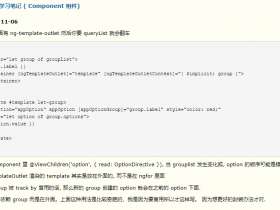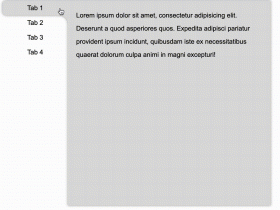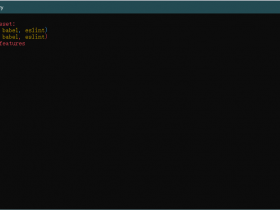- A+
其他章节请看:
类
类(class)是 javascript 新特性的一个重要组成部分,这一特性提供了一种更简洁的语法和更好的功能,可以让你通过一个安全、一致的方式来自定义对象类型。
试图解决的问题
es5 及早期版本中没有类的概念,通常会编写类似下面这样的代码来自定义类:
// 自定义类的思路是:首先创建一个构造函数,然后定义一个方法并赋值给构造函数的原型 function Rectangle(length, width){ this.length = length; this.width = width; } Rectangle.prototype.getArea = function(){ return this.length * this.width } let rect = new Rectangle(2, 3) console.log(rect.getArea()) // 6 console.log(rect instanceof Rectangle) // true 如果还需要实现继承,可能会这么实现:
// 定义类:Rectangle function Rectangle(length, width){ this.length = length; this.width = width; } Rectangle.prototype.getArea = function(){ return this.length * this.width } // 定义类:Square function Square(length){ // 对象冒充 Rectangle.call(this, length, length) } // 指定 Square 的原型 Square.prototype = Object.create(Rectangle.prototype, { constructor: { value: Square, enumerable: true, writable: true, configurable: true } }); let square = new Square(3) console.log(square.getArea()) // 9 - getArea() 方法从父类继承 console.log(square instanceof Square) // true console.log(square instanceof Rectangle) // true 通过自己模拟类、模拟继承,实现起来比较复杂,也非常容易出错。
解决方法
es6引入类(class),让类的创建和继承都更加容易。下面我们重写 Rectangle 的例子:
// 通过 class 定义一个类 class Rectangle{ constructor(length, width){ this.length = length; this.width = width; } // 方法直接写在 class 中 getArea(){ return this.length * this.width } } // 通过 extends 关键字指定类继承的函数,原型会自动调整 class Square extends Rectangle{ constructor(length){ // 通过调用 super() 方法即可访问基类的构造函数 super(length, length) } } let square = new Square(3) console.log(square.getArea()) // 9 console.log(square instanceof Square) // true console.log(square instanceof Rectangle) // true 这个版本比我们自定义的要简单很多,如果你先前对其他语言中的继承语法有所了解,那么你应该会觉得很亲切。
有关类(class)的具体使用、其他特性,都可以在下面的补充章节中找到答案
补充
类的创建
类和函数都存在声明形式和表达式形式。
声明类,首先编写 class 关键字,接着是类的名字,其他部分的语法类似对象字面量的简写形式,但类的各元素之间不需要使用逗号。就像这样:
// class 类名 class People{ constructor(name){ this.name =name; } // 不需要逗号 sayName(){ console.log(this.name) } } let people = new People('aaron') people.sayName() // aaron console.log(typeof People) // function {1} - People 其实还是一个函数 类的表达式语法:
// 直接将一个类赋值给变量 People let People = class{ constructor(name){ this.name =name; } sayName(){ console.log(this.name) } } let people = new People('aaron') people.sayName() // aaron 类(class)只是自定义类的一个语法糖。用 class 声明的类是一个函数,那么将这个函数赋值给一个变量,当然没问题。
类是一等公民
在程序中,一等公民是指可以传入函数,可以从函数返回,也可以赋值给变量。javascript 函数是一等公民,这是 javascript 中的一个独特之处,es6 也把类(class)设计成了一等公民。例如,将类(class)作为参数传入函数:
function createObject(classDef){ return new classDef() } let obj = createObject(class People{ sayName(){ console.log('aaron') } }) obj.sayName() // aaron 继承
在”解决方法“章节中,我们已经学会用 class 创建类,通过 extends 关键字指定类继承的函数,以及使用 super() 调用基类的构造函数。
当使用 super() 时切记以下几个关键点:
- 只可以在派生类(使用 extends 声明的类)的构造函数中使用 super(),否则会导致程序抛出错误
- 在构造函数中访问 this 之前,一定要调用 super(),它负责初始化 this,如果在调用 super() 之前访问 this 会导致程序报错
- 如果不想调用 super(),唯一的方法是让构造函数返回一个对象,否则也会导致程序报错
class A{} class B extends A{ constructor(){ } } let b = new B() // 报错 - 没有调用super() 内建对象的继承
现在可以通过继承创建自己的特殊数组。请看下面:
class MyArray extends Array{ } let myArray = new MyArray() myArray[0] = 11 console.log(myArray.length) // 1 myArray.length = 0; console.log(myArray[0]) // undefined MyArray 继承自 Array,其行为与 Array 也很相似。但在以前,用传统的继承方式是无法实现这样的功能。es6 类语法的一个目标是支持内建对象继承,因而 es6 中的类继承模型与 es5 中的稍有不同,主要体现是:
- es5 先由派生类(例如,MyArray)创建 this,然后调用基类的构造方法(例如 Array.apply()方法)
- es6 则相反,先由基类创建this,然后派生类的构造函数再修改,所以从一开始可以访问基类的所有内建功能
我们也可以继承自其他内建对象
静态成员
es5 及更早,通过直接将方法添加到构造函数中来模拟静态成员,例如:
function People(){} People.create = function(){} es6 简化了这个过程,类(class)通过 static 关键字定义静态方法:
class People{ constructor(name){ this.name = name } static create(name){ return new People(name) } } let p1 = People.create('aaron') console.log(p1.name) // aaron 静态成员也可以被继承,请看示例:
class A{ static say(){ console.log('A say') } } class B extends A{ } B.say() // A say 派生自表达式的类
es6 中最强大的一面或许是从表达式中导出类了。只要表达式可以被解析为一个函数并且具有[[Constructor]]属性和原型,就可以用 extends 派生。举个例子:
function Rectangle(length, width){ this.length = length; this.width = width; } Rectangle.prototype.getArea = function(){ return this.length * this.width } function getBase(){ return Rectangle; } // getBase()这个表达式返回 Reactangle, 具有[[Constructor]]属性和原型,因此 Square 类可以直接继承它 class Square extends getBase(){ constructor(length){ super(length, length) } } let square = new Square(3) console.log(square.getArea()) // 9 extends 强大的功能使得类可以继承自任意类型的表达式,从而创建更多的可能性。
类的构造函数中使用 new.target
class A{ constructor(){ if(new.target === A){ console.log(true) }else{ console.log(false) } } } class B extends A{ constructor(){ super() } } new A() // true {1} new B() // false {2} - B 调用 A 的构造函数,所以当调用发生时 new.target 等于 B 简单情况下,new.target 等于类的构造函数,就像行{1},但有时却会不同(行{2})。理解它(行{2})非常重要,因为每个构造函数可以根据自身被调用的方式改变自己的行为。例如,可以用 new.target 创建一个抽象基类(不能被直接实例化的类),就像这样:
// 抽象基类 BaseClass class BaseClass{ constructor(){ if(new.target === BaseClass){ throw new Error('这个类不能被实例化') } } sayName(){ console.log(this.name) } } class B extends BaseClass{ constructor(name){ super() this.name = name } } let b = new B('aaron') b.sayName() // aaron new BaseClass() // Error: 这个类不能被实例化 访问器属性和可计算成员名称
类支持直接在原型上定义访问器属性,例如我们用访问器属性封装一下数据 name:
// 数据 name 存储在变量 _name 中,只能通过访问器属性来操作,从而达到数据封装的目的 class People{ constructor(name){ this._name = name; } set name(v){ this._name = v; } get name(){ return this._name } } let people = new People('aaron') console.log(people.name) // aaron people.name = 'lj' console.log(people.name) // lj 类方法和访问器属性也支持可计算成员名称,请看下面示例:
let methodName = 'sayName' let getName = 'age' class People{ constructor(name){ this.name = name; } [methodName](){ console.log(this.name) } get [getName](){ console.log('get') } } let people = new People('aaron') people.sayName() // aaron people.age // get 生成器
在类中,可以将任意方法定义成生成器。但如果你的类是用来表示集合,那么定义一个默认的迭代器会更有用:
class Collection{ constructor(){ this.items = [] } push(v){ this.items.push(v) } *[Symbol.iterator](){ yield *this.items.values() } } let collection = new Collection() collection.push('11') collection.push('22') collection.push('33') for(let v of collection){ console.log(v) // 11 22 33 } 其他章节请看:




